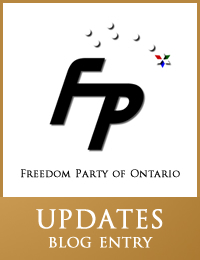 Through a perverse “fixed markup system”, the Liquor Control Board of Ontario increases its revenues by asking liquor producers to charge the LCBO more. So writes Ontario’s Auditor General in his annual report, released today (see section 3.08, beginning at page 186).
Through a perverse “fixed markup system”, the Liquor Control Board of Ontario increases its revenues by asking liquor producers to charge the LCBO more. So writes Ontario’s Auditor General in his annual report, released today (see section 3.08, beginning at page 186).
According to the AG, when the LCBO decides to stock a new product, it puts out a “needs letter” to suppliers. For each type of product, the needs letter tells suppliers the range of prices at which the LCBO would like to sell the product. That price is not based upon supply and demand. It is based on pure whim (which might explain, at least in part, why the Lagavulin I used to be able to buy for forty some odd dollars now costs well over $100 per bottle, only a few years later). Don’t stop reading: it gets worse. Much worse.
According to the AG, the LCBO has a “fixed markup structure”:
Markup rates vary by product category. However, within each category, the markup is the same for all products (examples are shown in Figure 3).
According to Figure three, the “vodka, whisky, rum” class of products has fixed markups of 141% (domestic products), 148.1% (imported products from the USA), and 148.0% (other imports). For “table wine” the markups are 65.5% (Ontario wines) and 71.5% (other domestic and imported wines).
Because the markups are fixed, the more a supplier charges the LCBO for its product, the higher the revenues of the LCBO for that product. For example, were a U.S. whisky company to sell a bottle of whisky to the LCBO for $15 (including federal excise tax, federal import duty, and freight), the LCBO markup would be $15 x 148.1= $22.212. However, if the LCBO has the same company charge $20 for the same bottle, the LCBO’s revenues from the sale of that bottle increase: $20 x 148.1 = $29.62. Those markups are not the total price charged to the consumer: they are the profits gained from the sale of a bottle of whisky.
According to the AG:
“If a supplier’s cost quote results in an amount that does not match the agreed-up retail price, the LCBO will ask it to raise or lower the wholesale cost of the product. We found examples both where the supllier’s intial cost quote had been raised and where it had been lowered…”
Get that? The LCBO literally has been telling its suppliers, in some cases, to charge the LCBO more for its product. The reason: the LCBO will reap a higher per bottle profit, as a result.
Hence the AG’s statement:
The LCBO’s fixed-pricing structure gives it no incentive to negotiate lower wholesale costs – doing so would result in lower retail prices and, in turn, lower profits…
The AG’s first recommendation is that the LCBO do a better job of telling the public how it sets prices:
“Although some of this information is disclosed on the LCBO website under the “Contact Us” section, it would not be easy for the public to find this information or use it to fully understand how beverage alcohol prices are set.”
That, most certainly, is to say the least. The public should be outraged that not only does the LCBO not seek the lowest price from suppliers, but that it actually colludes with them to raise the wholesale price, so that the LCBO can reap higher revenues. There is only one word for what the LCBO is doing: scandalous.
The implications for the AG’s findings in respect of LCBO pricing cannot be understated. No longer can public sector unions (see here) and academics (see here and here) oppose private liquor sales on the basis that the LCBO’s monopoly allows it to benefit from “economies of scale”. Clearly, it is utterly false that the LCBO is using its monopoly to get the lowest possible price from suppliers, so as to “pass the savings along to you, the consumer” (as the popular phrasing of that notion goes).
The finding also raises an important question. Specifically, there is no obvious reason why the LCBO must limit its margin by specifying a fixed margin (e.g., 148% on imported spirits). If the LCBO wants to sell a bottle for $42, it can do so whether it paid the producer $16.94 for the bottle, or paid the producer much less (e.g. $10.00 for the bottle). The only party that obviously benefits from fixing the margin is: suppliers. If the LCBO cannot raise a price without paying suppliers more for the product, this policy is essentially a gift to producers/suppliers. Now, ask yourself: what supplier would be opposed to a government monopoly that required suppliers to increase prices (hence profit margins)? What hooch-maker would not oppose competition for the LCBO? As ever, there is a corrupt private sector motive to oppose exposing the LCBO to private sector competition: private buyers would never pay suppliers the above-market prices that the LCBO pays suppliers.
In closing, I can only repeat what I, as Freedom Party of Ontario leader, proposed during the October 6, 2011 election: get rid of the pricing structures and make the LCBO compete with private sector stores.
[Paul McKeever can be reached for comment at 905-721-9772; or via e-mail: pmckeever@freedomparty.on.ca]